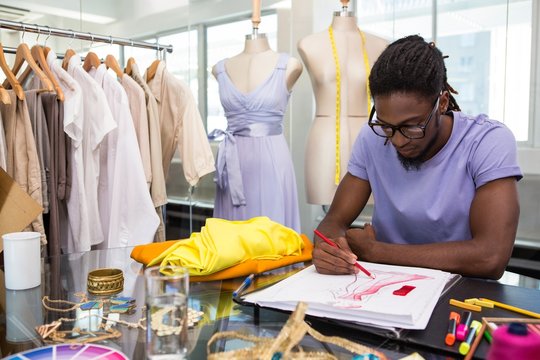Fashion is an ever-evolving industry, shaped by a wide variety of factors that influence trends, style choices, and consumer behavior. Today’s fashion scene is more dynamic and diverse than ever, with influences from culture, technology, social media, sustainability concerns, and global movements, among others. Understanding the key factors that influence fashion today is essential for industry professionals, designers, and consumers who wish to stay informed about current trends and anticipate the future direction of the fashion world.
In this article, we will explore the key factors influencing fashion today, highlighting the major drivers that have shaped modern fashion. We’ll also discuss how these factors are likely to continue evolving and the impact they have on how we approach clothing, style, and fashion culture.
1. Social Media and Influencers
In the digital age, social media has become one of the most significant forces shaping fashion trends. Platforms like Instagram, TikTok, and YouTube provide a space for influencers, celebrities, and everyday users to share their fashion choices with a global audience. Social media enables fashion to spread rapidly across borders, allowing trends to go viral almost overnight.
Influencers play a crucial role in shaping how consumers approach fashion. They have become powerful figures in the fashion world, often dictating what is popular and desirable. Whether it’s a celebrity showing off their latest outfit or a fashion influencer showcasing a specific style, their reach on social media has a profound impact on consumer purchasing decisions.
Furthermore, the instant nature of social media means trends can rise and fall in a matter of days or weeks. This rapid pace of change challenges traditional fashion cycles, which once operated on a slower schedule dictated by seasonal collections and fashion weeks.
Example: TikTok has been a significant influence on fashion trends in recent years, with viral fashion challenges and “get ready with me” (GRWM) videos encouraging users to showcase their daily outfits and styling tips, which then impact mainstream fashion choices.
2. Sustainability and Ethical Fashion
In recent years, there has been a growing focus on sustainability and ethical fashion. Consumers are becoming increasingly aware of the environmental impact of the fashion industry, particularly in terms of waste, water usage, and carbon emissions. As a result, there is a shift towards more sustainable and eco-friendly fashion choices.
Sustainable fashion includes the use of organic materials, recycled fabrics, and ethical manufacturing practices. Brands that prioritize environmental responsibility are gaining popularity among eco-conscious consumers who want to make a positive impact with their purchasing decisions. The rise of second-hand and vintage clothing, along with the growing popularity of “slow fashion,” is also contributing to a more sustainable fashion culture.
Example: Brands like Patagonia, Stella McCartney, and Reformation are leading the charge in sustainable fashion, using eco-friendly materials, fair labor practices, and environmentally responsible production processes.
3. Technology and Innovation
Technology has had a transformative impact on the fashion industry in recent years. From virtual fashion shows to AI-powered design tools, technology is shaping the way clothes are designed, manufactured, and marketed. Innovations in fabric production, such as the development of smart textiles, have also had a significant impact on fashion.
3D printing technology has allowed designers to create intricate, one-of-a-kind designs that would have been difficult or impossible to achieve using traditional methods. Virtual try-ons, powered by augmented reality (AR), are becoming more common in online retail, allowing consumers to see how clothes will look on them before making a purchase.
Additionally, fashion tech innovations such as AI-driven algorithms are helping brands predict trends more accurately, while wearable technology is integrating fashion with function. For example, smartwatches and fitness trackers are now stylish accessories, blending fashion with practicality.
Example: The fashion show of the future is already happening with virtual reality and 3D designs. Designers like Balenciaga and Tommy Hilfiger have embraced virtual fashion shows that allow viewers from all over the world to experience their collections in a digital format.
4. Globalization and Cultural Influences
As the world becomes more interconnected through travel, communication, and the internet, fashion is no longer confined to the traditional fashion capitals of the world. The global exchange of cultural ideas, styles, and aesthetics has given rise to a more diverse fashion scene.
Cultural influences from various parts of the world have become major trends in the fashion industry. Designers are now inspired by a broader array of cultural aesthetics, and consumers are more interested in exploring fashion from different regions. This has led to the blending of traditional fashion styles with modern design, creating hybrid fashion that resonates with global audiences.
Example: The popularity of African-inspired prints, Indian embroidery, and Japanese streetwear in Western fashion has demonstrated how global influences are reshaping fashion trends. High-fashion houses like Dior, Louis Vuitton, and Gucci have incorporated elements from different cultures into their collections, broadening their appeal.
5. Gender Fluidity and Inclusivity
The fashion industry is increasingly embracing gender fluidity and inclusivity. In recent years, there has been a growing recognition of the need for fashion to cater to all body types, gender identities, and cultural backgrounds. Designers and brands are embracing diversity, offering clothing that can be worn by people of all sizes, shapes, and gender identities.
The traditional binary approach to fashion is being challenged, with more collections and designs being created for gender-neutral wear. The push for inclusivity is also reflected in the rise of adaptive clothing, which focuses on creating stylish and functional fashion for people with disabilities.
Example: Major fashion brands like Balenciaga, Prada, and Givenchy have included gender-fluid clothing in their collections, and many brands are expanding their sizing options to include a wider range of body types. The 2021 Met Gala, which celebrated the theme of “American Independence,” featured several gender-neutral fashion statements that challenged traditional gender norms.
6. Fast Fashion and Consumerism
Fast fashion has been one of the most dominant forces in the fashion industry for over two decades. The rapid production of inexpensive, on-trend clothing has made fashion more accessible to a global audience. Retailers like Zara, H&M, and Shein are examples of brands that have capitalized on the demand for affordable, quickly produced fashion.
However, the rise of fast fashion has come under scrutiny in recent years due to its environmental impact, poor working conditions in factories, and encouragement of overconsumption. Despite these challenges, fast fashion continues to be a significant factor in the industry, with many consumers still opting for affordable, trendy clothing on a regular basis.
Example: The trend of “microtrends” — short-lived, viral fashion trends that can quickly saturate the market — is a direct result of the fast-fashion model. These trends are often replicated quickly by fast-fashion retailers and flooded the market with low-cost, trendy items.
7. Economic Factors and Consumer Behavior
Economic conditions and consumer behavior have always been major drivers of the fashion industry. When the economy is strong, consumers have more disposable income to spend on clothing, and this often leads to increased demand for luxury items and designer labels. However, during times of economic uncertainty or recession, consumers may prioritize necessity over luxury, leading to shifts in the fashion market.
The COVID-19 pandemic had a significant impact on fashion, causing a decline in demand for formal and office wear as remote work became the norm. Instead, loungewear and athleisure brands saw an increase in demand, as comfort became the priority.
Example: The surge in demand for sweatpants, hoodies, and activewear during the pandemic is an example of how economic factors and changing consumer needs can reshape fashion trends. Brands like Nike, Adidas, and Lululemon capitalized on this shift by offering stylish and comfortable apparel for home use.
FAQs About Factors Influencing Fashion Today
- How does social media influence fashion trends?
- Social media platforms like Instagram and TikTok allow influencers and users to share their fashion choices, making trends spread quickly and allowing global audiences to adopt new styles.
- What is sustainable fashion?
- Sustainable fashion refers to clothing that is produced using eco-friendly materials and ethical manufacturing practices, focusing on minimizing environmental impact and promoting fair labor conditions.
- How is technology changing the fashion industry?
- Technology is revolutionizing fashion through innovations like virtual try-ons, AI-driven trend prediction, 3D printing, and smart textiles, enhancing both the design and shopping experience.
- What role does cultural diversity play in modern fashion?
- Globalization has brought cultural influences from around the world into mainstream fashion, leading to a more inclusive and diverse fashion industry that celebrates different traditions and aesthetics.
- What is gender-neutral fashion?
- Gender-neutral fashion refers to clothing that is not designed specifically for men or women but can be worn by anyone, reflecting the growing trend of inclusivity and gender fluidity in fashion.
- What impact does fast fashion have on the environment?
- Fast fashion leads to increased waste, pollution, and overconsumption, as clothing is produced cheaply and quickly to meet short-lived trends, contributing to significant environmental harm.
- How do economic conditions influence fashion?
- Economic factors, such as consumer spending power and economic downturns, shape the demand for fashion items, with luxury brands flourishing during economic booms and affordable fashion gaining popularity during recessions.
Conclusion
Fashion today is shaped by a wide range of factors that reflect the complexity of global culture, technological advancements, social movements, and economic realities. From social media’s influence on trends to the growing demand for sustainability, the fashion industry is constantly evolving to meet the needs and desires of consumers. These factors also highlight the importance of inclusivity, cultural sensitivity, and innovation in shaping the future of fashion.
The fashion world is experiencing a dynamic shift where sustainability, technology, and consumer-driven trends are increasingly at the forefront. Designers, brands, and consumers must continue to adapt to these changes in order to thrive in an industry that is constantly evolving.
Key Takeaways
- Social media and influencers have revolutionized how trends are disseminated and consumed globally.
- Sustainability and ethical considerations are becoming increasingly important to consumers, influencing fashion choices.
- Technology is transforming the fashion industry with innovations in design, production, and retail experiences.
- Cultural influences from around the world are diversifying fashion, leading to more inclusive and globally inspired trends.
- Gender-neutral and inclusive fashion is gaining traction, reflecting societal shifts towards greater acceptance of diversity
. 6. Fast fashion continues to dominate the market, but its environmental impact is prompting shifts toward more sustainable alternatives. 7. Economic conditions and changing consumer behaviors play a significant role in shaping demand and fashion trends.




